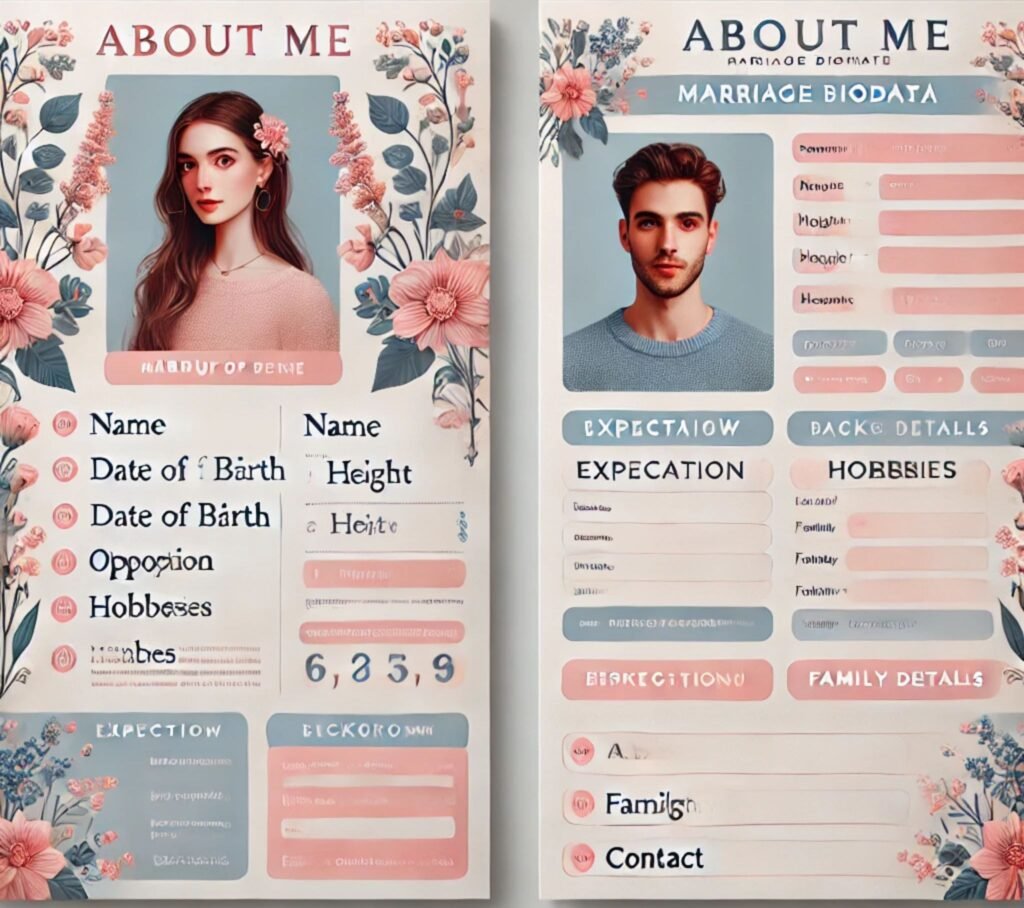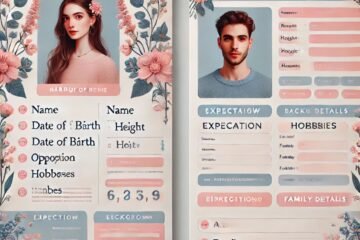Creating a strong and effective shadi biodata is one of the first and most essential steps in the Indian matchmaking process. Whether you’re using matrimonial websites, going through traditional family introductions, or being referred through friends, your biodata is often the very first impression you make. It not only reflects your background and personality but also sets the tone for how potential matches and their families perceive you.
In this detailed guide, we will walk you through the complete step-by-step process of creating a compelling shadi biodata format that stands out while being respectful of cultural expectations.
What is a Shadi Biodata?
A shadi biodata is a document that summarizes your personal, familial, educational, and professional details in a concise, easy-to-understand format, typically shared with prospective brides, grooms, or their families. It functions much like a resume—but for marriage proposals.
While biodata formats may vary depending on region, religion, and personal preferences, the goal is the same: present relevant details in a way that encourages further communication and eventual meetings.
Step-by-Step Format to Create the Ideal Shadi Biodata
Let’s break down the most commonly accepted sections of a shadi biodata format, including tips on what to include, how to phrase it, and what to avoid.
1. Basic Personal Information
This section is the foundation of any marriage biodata. Keep it formal and concise.
Include:
-
Full Name
-
Date of Birth
-
Age
-
Height
-
Weight (optional)
-
Religion
-
Caste/Subcaste (if relevant)
-
Mother tongue
-
Marital Status
-
Contact information (phone/email – or mention “will be shared after initial interest”)
2. Family Background
Families play a central role in Indian marriages, making this section crucial. Be respectful and avoid exaggeration.
Include:
-
Father’s Name & Occupation
-
Mother’s Name & Occupation
-
Siblings (number and a line or two about them)
-
City and State of residence
-
Family values (Traditional/Moderate/Modern)
3. Educational Qualifications
This is a key element, especially in urban and educated circles. List from the highest qualification downward.
Include:
-
Degree(s)
-
Institute(s) attended
-
Year of graduation (optional)
-
Academic achievements (optional)
4. Professional Background
In today’s era, career details are just as important as education, especially for brides and grooms working in metro cities.
Include:
-
Job title
-
Company name
-
Location
-
Years of experience
-
Salary package (optional)
-
Career goals (optional but can add clarity)
5. Lifestyle & Personality
A section many ignore, but it adds depth and character to your profile.
Include:
-
A brief personality description
-
Hobbies & interests
-
Languages spoken
-
Lifestyle preferences (vegetarian/non-vegetarian, drinking, smoking habits)
-
Travel interests or fitness preferences
6. Partner Expectations
Be honest but reasonable. Avoid sounding too demanding.
Include:
-
Preferred age range
-
Education or professional background expectations
-
Location preferences
-
Family or cultural values expected
7. Photograph
Attach a recent, formal, high-resolution photo. This is a non-verbal yet powerful part of your marriage biodata details. A clear headshot with a gentle smile, in decent attire, is always appreciated.
Tips to Make Your Shadi Biodata Stand Out
Creating a bio data for marriage simple does not mean boring. Keep it clean, minimal, and personalized.
-
Avoid typos or casual language. This is not a social media post.
-
Use bullet points to keep it easy to scan.
-
Keep formatting consistent, whether it’s font size or spacing.
-
Avoid sensitive topics like previous relationships, unless required.
-
Be truthful. Small lies can cause major misunderstandings later.
Digital vs Traditional Biodata
Thanks to modern platforms, you now have the choice of sharing your marriage bio data online via websites, apps, or PDFs. While traditional printed biodata is still used in arranged marriages, most families now appreciate digital formats too—especially those living abroad or in urban cities.
Benefits of Online Formats:
-
Easily shareable via WhatsApp or email
-
Editable and updateable
-
Eco-friendly
-
Can include clickable links (LinkedIn, portfolio, etc.)
Customizing for Cultural and Regional Differences
India is incredibly diverse. You might need to tweak your simple biodata for marriage format based on your community’s expectations. For example:
-
Muslim biodatas often include a section on religious inclination and expectations.
-
South Indian biodatas might include nakshatra, gothram, or horoscope details.
-
Punjabi families may focus more on family business and social standing.
Always consult your parents or elders to ensure nothing culturally significant is missed.
Conclusion
Your shadi biodata is more than just a piece of paper—it’s a gateway to a potential lifelong relationship. When thoughtfully crafted, it becomes a meaningful reflection of who you are, what you value, and the kind of life partner you seek.
The ideal shadi biodata format should balance clarity, depth, and personality. It should be informative without being overwhelming, and formal without being too stiff.
Take your time to build one that truly represents you. If you’re unsure, consult a friend, sibling, or even professional matrimonial services to polish it. With the right tone and attention to detail, your biodata could be the start of something beautiful.




